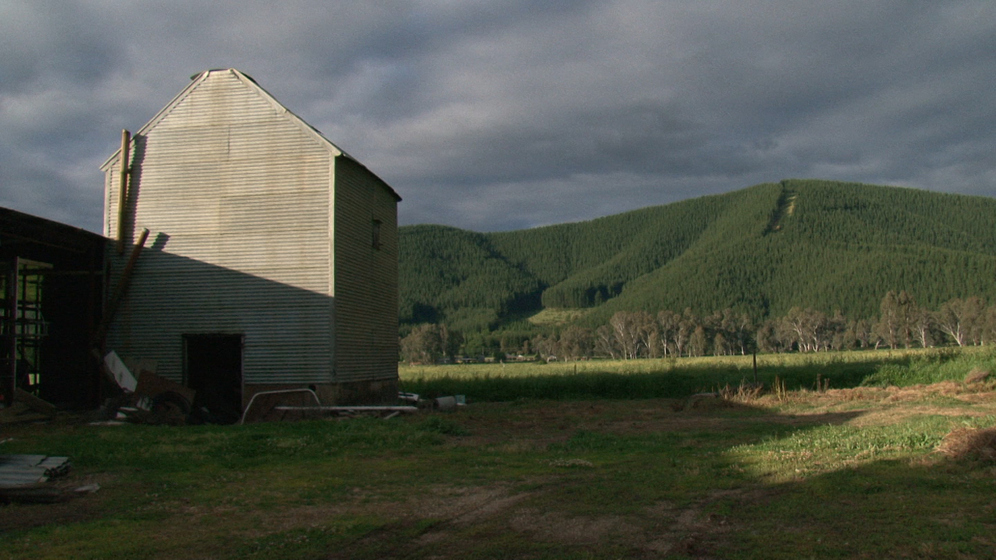See story for image details
Reuse this media
Can you reuse this media without permission? No (with exceptions, see below)
Conditions of use
All rights reserved
This media item is licensed under "All rights reserved". You cannot share (i.e. copy, distribute, transmit) or rework (i.e. alter, transform, build upon) this item, or use it for commercial purposes without the permission of the copyright owner. However, an exception can be made if your intended use meets the "fair dealing" criteria. Uses that meet this criteria include research or study; criticism or review; parody or satire; reporting news; enabling a person with a disability to access material; or professional advice by a lawyer, patent attorney, or trademark attorney.
Attribution
Please acknowledge the item’s source, creator and title (where known)
Photograph - Tobacco Kilns Today (production still from 'The Savoy Ladies Group'), Jary Nemo (photographer), 2014, Wind & Sky Productions
Courtesy of Wind & Sky Productions and Jary Nemo
Reuse this media
Can you reuse this media without permission? No (with exceptions, see below)
Conditions of use
All rights reserved
This media item is licensed under "All rights reserved". You cannot share (i.e. copy, distribute, transmit) or rework (i.e. alter, transform, build upon) this item, or use it for commercial purposes without the permission of the copyright owner. However, an exception can be made if your intended use meets the "fair dealing" criteria. Uses that meet this criteria include research or study; criticism or review; parody or satire; reporting news; enabling a person with a disability to access material; or professional advice by a lawyer, patent attorney, or trademark attorney.
Attribution
Please acknowledge the item’s source, creator and title (where known)
© Copyright of Jary Nemo
Courtesy of Wind & Sky Productions and Jary Nemo
The first true settlers of Victoria’s mountainous North-Eastern region were the Pangerang, Minjambuta, Duduroa and Jaitmathang (Ya-itma-thang) peoples who spoke the Waywurra, Mogullumibidj and Dhudhuroa languages.
They inhabited the alpine areas and surrounding river valleys – now known as the Ovens, King, Buffalo, Kiewa and Mitta-Mitta Valleys - for tens of thousands of years. European settlers arrived seeking grazing lands for sheep and cattle in the 1830s. The discovery of Gold in Beechworth and the Ovens Valley in the 1850s sparked a wave of migration from around the world, including thousands of Chinese miners from the Guangdong Province.
Tobacco and hops farming in the Ovens and King Valleys was begun in the nineteenth century by Chinese settlers of the post gold rush era. Italians started arriving and farming tobacco in the region in the 1920s. The industry really boomed in the post war period, particularly the 1950s and 1960s, dotting the valleys with distinctive fields and kilns. The close proximity of the Bonegilla Reception Centre and the attractive share farming model meant the tobacco farms were populated by migrants from all over Europe, but Italians were always foremost. By the 1970s in Myrtleford one in seven residents were born in Italy and features such as local cuisine and an Italian language cinema developed.
Italian women migrants, who in the 1930s-1960s often arrived to Australia later than their husbands and sometimes arrived as proxy brides, played a significant role in the tobacco farms, not only in the domestic sphere – raising families, looking after their own and (at times) other family’s children, cooking meals for the share farmers and labourers - but also on the farms themselves. Before the introduction of mechanised processes women would tie up the tobacco in preparation for drying and also did manual labouring on the farms – hoeing the fields, poisoning for the pervasive tobacco grub, planting out seedlings. Children of tobacco farming families were also put to work.
About the Savoy Ladies Group
It was a lonely experience for many of the Italian women who came to Myrtleford to raise families and farm tobacco. Often hailing from small and tightly-knit rural villages, it wasn’t unusual for women to have never travelled outside of their home town in their lives before coming to Australia. This was the experience of those who left Italy before World War Two and even well into the post-war migration boom of the 1960s. Unlike the close communities of their home, the spread-out farms on the Ovens, Buffalo and King Rivers were kilometres apart. Many women couldn’t drive, and as unlike their husbands they spent their time almost exclusively on the farms, many did not develop English language skills. As mechanisation changed the labour required and as children finished school and left home the women of the farms became increasingly isolated.
The Myrtleford Savoy Ladies Group was formed by a group of nuns in 1983 to combat the social isolation of the Italian women tobacco farmers. One its first activities was to give driving instructions and English lessons to its members, many of whom were in their fifties and sixties – resulting in a new independence for the women of the region. As well as providing important social forum through the fortnightly tombola, the Savoy Ladies Group provided an avenue for vital health information, excursions, and outreach to the frail elderly.
When the tobacco industry finished in 2006, causing economic hardship to the families working and farming in the area, the Savoy Ladies Group became an important lifeline for families in distress. More than thirty years on the Savoy Ladies Group continues to form a significant part of the social fabric of this unique rural community, and it speaks of the power of companionship and the resilience of this remarkable group of women.
For more information visit:
The History of the Savoy Ladies Group by Samantha Dinning, Wind & Sky Productions.
For more information visit:
The North-East Victorian Migration Story by Samantha Dinning, Wind & Sky Productions.
The History of Myrtleford from Original Owners to Today by John Taylor, Myrtleford and District Historical Society.


